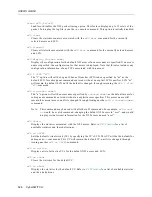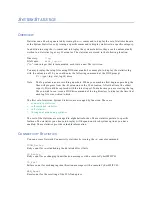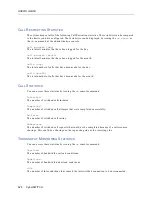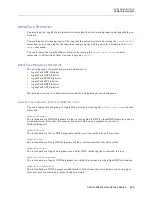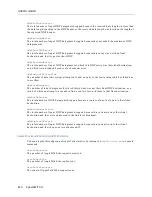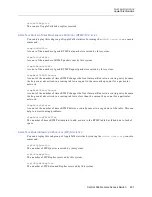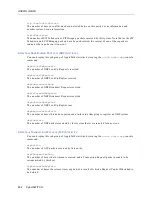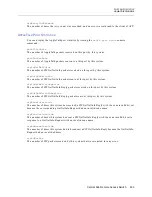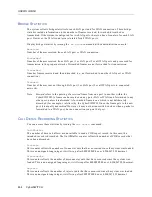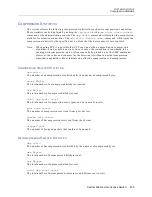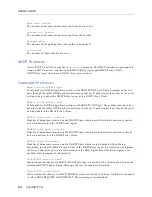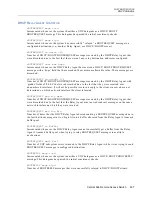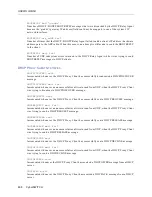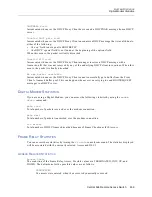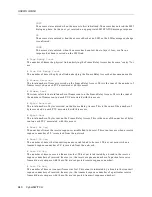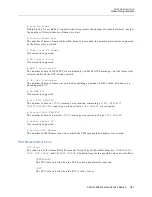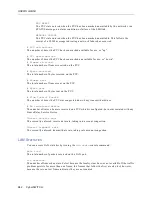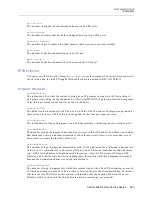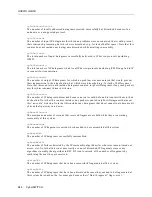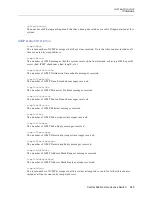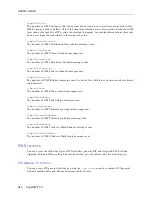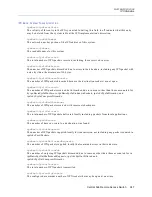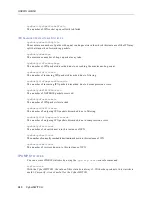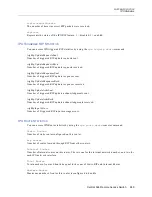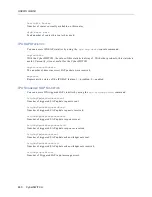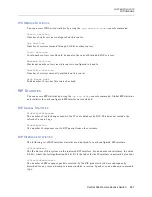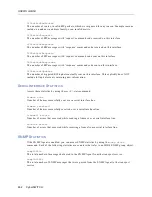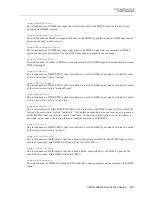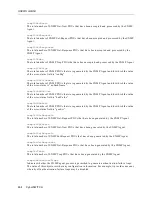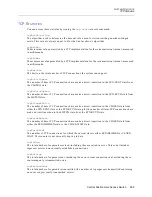
USER’S GUIDE
640 CyberSWITCH
INIT
The access state entered when the access is first initialized. The access has entered the LMI
dialogue phase, but has not yet received an appropriate LMI STATUS message response.
UP
The access state entered when the access either has no LMI, or the LMI message exchange
is confirmed.
DOWN
The access state entered when the access has been lost due to layer 1 loss, or after no
response has been received on the LMI link.
# Line Ready Count
The number of times the physical link underlying the Frame Relay Access has become “ready” for
use.
# Line Not Ready Count
The number of times the physical link underlying the Frame Relay Access has become unusable.
# Frames Received
The total number of frames received on the Frame Relay Access. This is the sum of the number of
frames received on each PVC associated with this access.
# Frames Sent
This item refers to the total number of frames sent on the Frame Relay Access. This is the sum of
the number of frames sent on each PVC associated with this access.
# Bytes Received
The total number of bytes received on the Frame Relay Access. This is the sum of the number of
bytes received on each PVC associated with this access.
# Bytes Sent
The total number of bytes sent on the Frame Relay Access. This is the sum of the number of bytes
sent on each PVC associated with this access.
# Reset Rx Seq
The number of times the receive sequence variable had to be reset. This event occurs when a receive
sequence number of ‘0’ is received from the network.
# Reset Tx Seq
The number of times the transmit sequence variable had to be reset. This event occurs when a
transmit sequence number of ‘0’ is received from the network.
# Lost Rx Seq
The number of times a receive frame was lost. This event is indicated by a break in the receive
sequence numbers of received frames (i.e., the receive sequence number of a particular receive
frame did not compare with the software’s expected receive sequence number).
# Lost Tx Seq
The number of times a transmit frame was lost. This event is indicated by a break in the transmit
sequence numbers of received frames (i.e., the transmit sequence number of a particular receive
frame did not compare with the software’s expected transmit sequence number).

